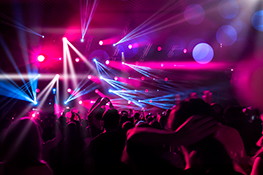Elevate Your Event: Mastering the Art of Professional Stage Lighting
Understanding the Fundamentals of Stage Lighting
Stage lighting is more than just illuminating a performer; it’s a powerful storytelling tool. Mastering its nuances can transform an event from ordinary to extraordinary. This begins with understanding the core components: lighting fixtures (including LED pars, moving heads, and spotlights), control consoles, and the essential accessories like gels, gobos, and dimmers. Each element plays a crucial role in shaping the mood, highlighting key moments, and guiding the audience’s eye. Choosing the right fixtures depends heavily on the type of event, venue size, and desired aesthetic. For instance, a small intimate concert might benefit from warm-toned LED pars, while a large theatrical production would require a more complex setup with moving heads and specialized effects.
The Power of Color and its Psychological Impact
Color psychology is a significant aspect of stage lighting design. Different colors evoke distinct emotional responses. Warm colors like reds and oranges create energy and excitement, while cool colors like blues and purples can establish calmness or mystery. Understanding how color impacts the audience’s perception allows for meticulous control over the narrative. The skillful use of color washes can build tension, highlight specific areas, or guide the flow of the performance. Experimenting with color palettes is key to finding the perfect blend to match the event’s theme and desired atmosphere.
Strategic Lighting Techniques for Different Event Types
Concerts and Live Music:
Dynamic and energetic lighting is crucial for live music. Moving heads offer the flexibility to create visually stimulating effects synchronized with the music’s rhythm. Strategic use of strobes can amplify high-energy moments, while washes of color can support the overall mood and emotion of the performance. Laser effects can add another layer of visual excitement, especially in large-scale concerts.
Corporate Events and Presentations:
Corporate events require a more subtle yet professional approach. Clean, crisp lighting that ensures optimal visibility is paramount. Strategic uplighting can enhance the ambiance, while focused spotlights can highlight key speakers or presentations. Avoid overly flashy effects, opting instead for a polished and sophisticated aesthetic that aligns with the brand image.
Theatrical Productions:
Theatrical lighting is a specialized art form that requires a deep understanding of storytelling through light. It utilizes a variety of techniques, including shaping light with gobos, creating depth with shadows, and using color to emphasize character emotions. The lighting design needs to work in harmony with the set design, costumes, and the overall narrative.
Choosing the Right Equipment for Your Needs
Investing in quality stage lighting equipment is a worthwhile investment. At stagelights.in, we offer a wide range of professional lighting solutions to meet various event needs and budgets. From entry-level LED fixtures to high-end moving head systems, we provide expert guidance to help you choose the perfect equipment for your specific requirements. Consider factors such as the venue size, the type of event, your budget, and your technical expertise when making your selection.
Mastering Lighting Control and Programming
Controlling the lighting effectively is essential. Modern lighting consoles offer sophisticated programming capabilities, allowing for the creation of intricate light shows. Learning how to program lighting cues, create chases, and use timing effects is crucial for achieving the desired visual impact. Many consoles offer intuitive interfaces that simplify the learning process. Investing time in understanding the console’s functionalities can greatly enhance the quality of your lighting design.
Safety and Best Practices
Safety is paramount when working with stage lighting. Always ensure proper grounding, use appropriate safety equipment, and adhere to all relevant regulations. Regularly inspect equipment for any damage and avoid overloading circuits. Proper planning and meticulous execution are crucial for both a successful and safe event.
Conclusion
Mastering the art of professional stage lighting elevates any event. By understanding the fundamental principles, utilizing strategic techniques, and investing in quality equipment, you can create unforgettable experiences. Contact stagelights.in today to explore our extensive range of products and expert advice, and let us help you illuminate your next event.


 Auditorium Construction Services
Auditorium Construction Services 